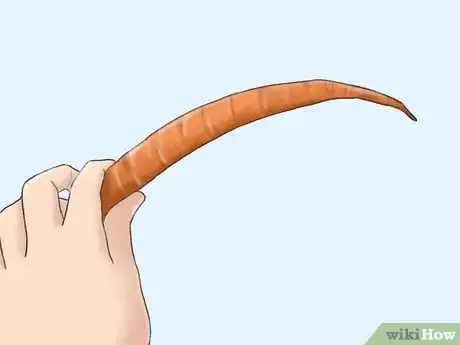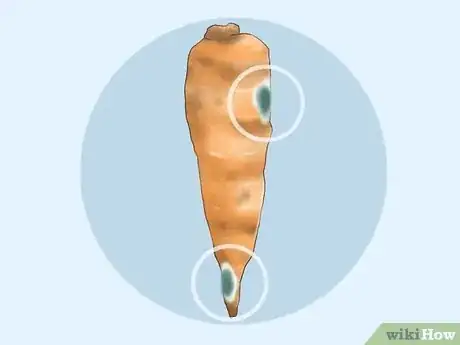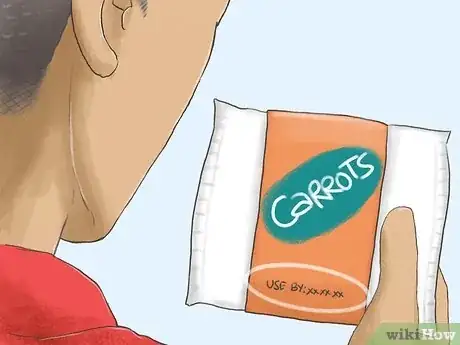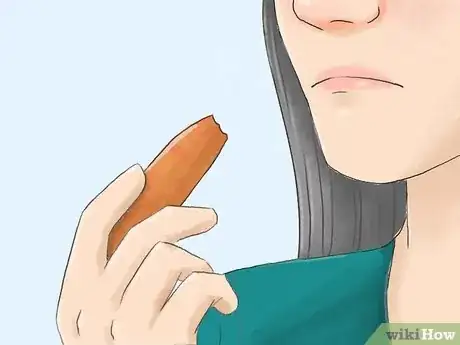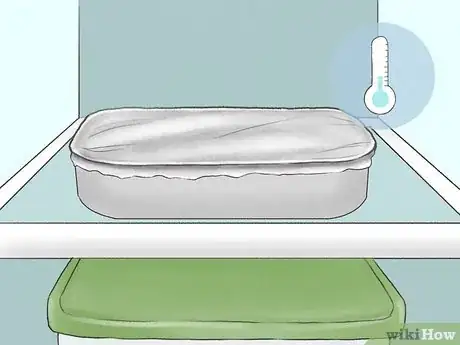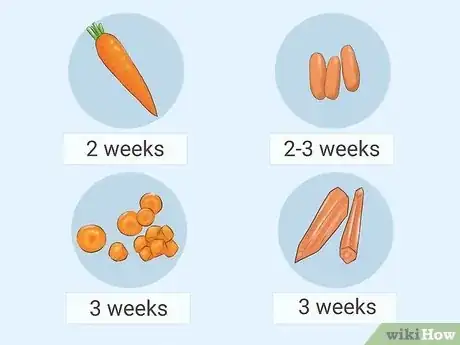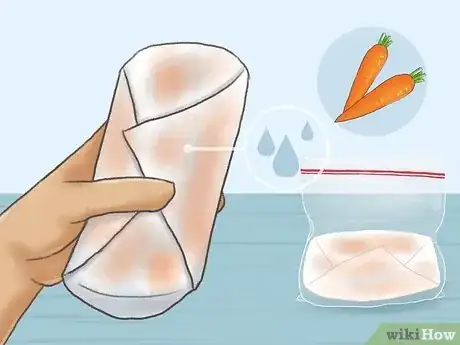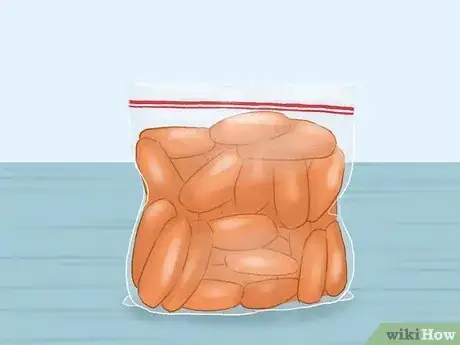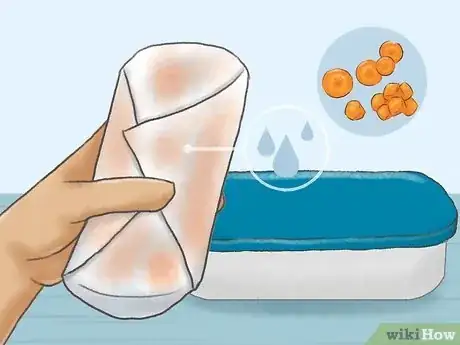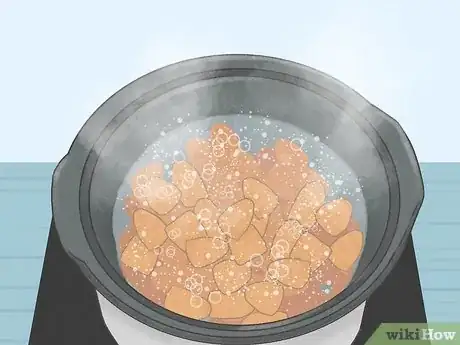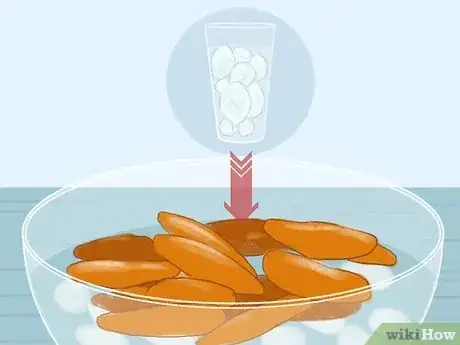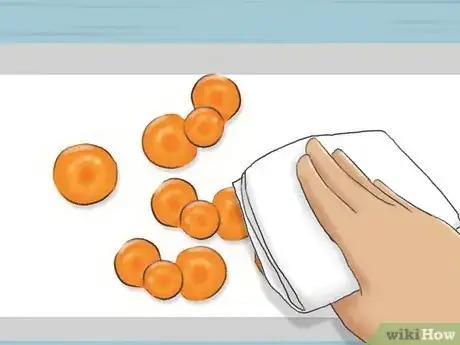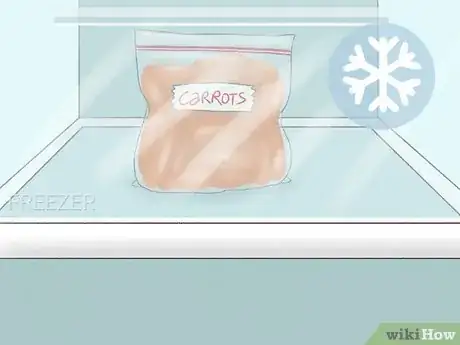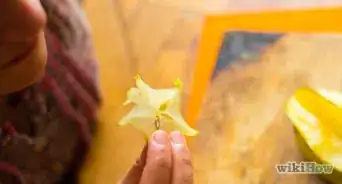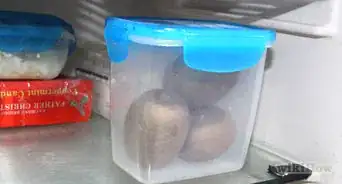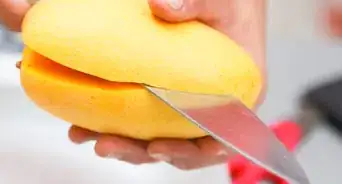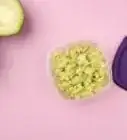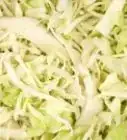This article was co-authored by wikiHow staff writer, Janice Tieperman. Janice is a professional and creative writer who has worked at wikiHow since 2019. With both a B.A. and M.A. in English from East Stroudsburg University, she has a passion for writing a wide variety of content for anyone and everyone. In her free time, you can find her working on a new crochet pattern, listening to true crime podcasts, or tackling a new creative writing project.
There are 9 references cited in this article, which can be found at the bottom of the page.
This article has been viewed 57,224 times.
Learn more...
Wondering how to know if carrots are bad? No worries—we’ve got you covered with plenty of handy advice on whether your carrots are still safe to eat. We’ve even included some tips and tricks on how to safely refrigerate and freeze your carrots, so they can stay fresh and delicious for as long as possible.
Steps
Signs That Carrots Are Bad
-
1Sliminess: If baby carrots are slimy, are they bad? Yes—sliminess means that your carrots are past their prime.[1]
- It’s not worth peeling off the outer slimy layer and salvaging the rest of the carrot. If your baby carrots are slimy in the bag, you’re better off just getting a new, fresh package that isn’t spoiled.
-
2Dark spots or lines: Have you noticed some dark spots or black lines on carrots? These could be signs of black root rot or Alternaria leaf blight. Thinner, dark brown lines usually signify crown rot.[2] It’s never a good idea to eat or cook with rotted vegetables.Advertisement
-
3Mushy/soft texture: Carrots taste best when they’re firm and crunchy, but they’re still safe to eat when they have a more rubbery texture. It’s soft and mushy carrots that you want to be on the look-out for—these carrots are spoiled and not safe to eat.[3]
- Baby carrots sometimes get rubbery when they aren’t sealed and stored properly, but they aren’t dangerous to eat.
-
4Bad smell: A stinky, rotten smell is a classic sign that your carrots have gone bad. Before grabbing any carrots from your bag, take a quick whiff. If something doesn’t smell quite right, toss out the carrots and buy a new, fresh bag.[4]
-
5Mold: Carrots often fall victim to white mold, which can look fuzzy and patchy on the surface of the vegetable.[5] As you probably assumed, moldy carrots are not safe to eat and need to be tossed out right away.
- Some people suggest cutting off the moldy sections and using the rest of the vegetable, but that isn’t a good idea. Moldy foods often carry a lot of bacteria, which can potentially make you really sick. [6]
How to Freeze Carrots
-
1Prepare the carrots and blanch them in boiling water. Rinse off the carrots, slice off the tops, and peel away the skin (if you’re working with whole carrots). Then, pour the carrots into a pot of boiling water, letting them sit for 3-5 minutes.[18]
- Blanching helps the carrots taste fresh even after they’re in the freezer for several months.
- Sliced carrots are good to go after 2 minutes in the boiling water, while entire carrots take 5 minutes to fully blanch.
-
2Soak the carrots in ice water, drain them, and put them on a lined tray. Scoop up the blanched carrots with a slotted spoon and let them soak in the cold water for 3-5 minutes, or however long they blanched for. Then, pour out the ice water and transfer the veggies to a baking sheet lined with parchment paper.[19]
-
3Pat the carrots dry and slide them into a bag. Grab a clean cloth or paper towel and blot any away any leftover ice water from the carrots. Once they’re all dry, stick the blanched carrots into a sealable plastic bag.[20]
- It may help to label the bag with the current date so you don’t forget how old the carrots are.
-
4Freeze the bagged carrots for up to 12 months. Carrots can last for a while in the freezer, so it’s okay if you forget about them for a few months.[21]
- Baby carrots can stay fresh for up to 18 months, though it’s okay if you freeze them for a little longer than that.[22]
-
5Thaw the carrots either in a bowl of cold water or in the refrigerator. Move the bag to your refrigerator the night before you plan on eating or cooking the frozen carrots—they’ll be thawed and good to go by the next day. If you’re in a rush, stick the carrots in a cool water bath. Just be sure to drain and replace the water every 30 minutes so it stays cold![23]
- Keep an eye on the temperature of your carrots as they thaw. Bacteria tends to rapidly form in temperatures higher than 40 °F (4 °C).
References
- ↑ https://blogs.extension.iastate.edu/answerline/2019/03/07/baby-carrots-myth-and-facts/
- ↑ https://ag.umass.edu/vegetable/fact-sheets/carrots-identifying-diseases
- ↑ https://blogs.extension.iastate.edu/answerline/2019/03/07/baby-carrots-myth-and-facts/
- ↑ https://blogs.extension.iastate.edu/answerline/2019/03/07/baby-carrots-myth-and-facts/
- ↑ https://ag.umass.edu/vegetable/fact-sheets/carrots-identifying-diseases
- ↑ https://health.clevelandclinic.org/what-happens-if-you-eat-moldy-food/
- ↑ https://blogs.extension.iastate.edu/answerline/2019/03/07/baby-carrots-myth-and-facts/
- ↑ https://www.consumerreports.org/food-safety/how-to-tell-whether-expired-food-is-safe-to-eat-a1083080425/
- ↑ https://www.allrecipes.com/article/how-to-store-carrots-to-keep-them-fresh/
- ↑ https://extension.purdue.edu/foodlink/food.php?food=carrot
- ↑ https://extension.purdue.edu/foodlink/food.php?food=carrot
- ↑ https://blogs.extension.iastate.edu/answerline/2019/03/07/baby-carrots-myth-and-facts/
- ↑ https://www.allrecipes.com/article/how-to-store-carrots-to-keep-them-fresh/
- ↑ https://extension.purdue.edu/foodlink/food.php?food=carrot
- ↑ https://blogs.extension.iastate.edu/answerline/2019/03/07/baby-carrots-myth-and-facts/
- ↑ https://www.allrecipes.com/article/how-to-store-carrots-to-keep-them-fresh/
- ↑ https://www.allrecipes.com/article/how-to-store-carrots-to-keep-them-fresh/
- ↑ https://nchfp.uga.edu/how/freeze/carrot.html
- ↑ https://extension.umn.edu/preserving-and-preparing/vegetable-blanching-directions-and-times-home-freezer-storage
- ↑ https://www.allrecipes.com/article/how-to-store-carrots-to-keep-them-fresh/
- ↑ https://extension.umn.edu/preserving-and-preparing/vegetable-blanching-directions-and-times-home-freezer-storage
- ↑ https://blogs.extension.iastate.edu/answerline/2019/03/07/baby-carrots-myth-and-facts/
- ↑ https://www.allrecipes.com/article/how-to-store-carrots-to-keep-them-fresh/
- ↑ https://www.allrecipes.com/article/baby-carrots-white-stuff/


